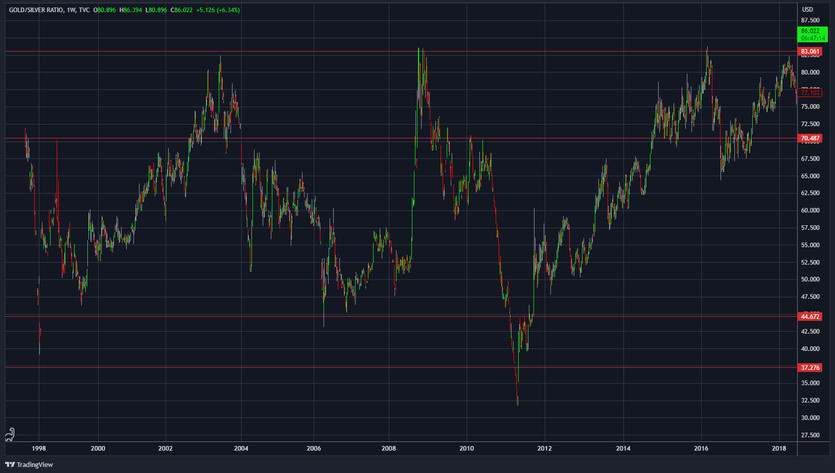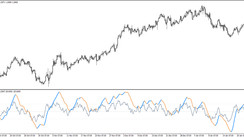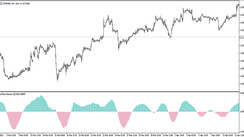The gold-silver ratio, effectively, serves as a numerical reflection of how many ounces of silver are required to purchase one ounce of gold. This ratio might be a frequently used jargon amongst those who are ardent followers of physical assets, but it is often an overlooked or underappreciated metric amongst the general investors. However, this ratio presents an opportunity to generate significant profits through well-proven investment strategies.
Let's delve deeper into understanding how investors can leverage the fluctuations in the gold-silver ratio for their benefit.
Key Insights on the Gold-Silver Ratio
The gold-silver ratio is a critical tool that investors employ to ascertain the comparative value of silver in relation to gold. An astute investor, foreseeing the potential movements of this ratio, can yield profits irrespective of the rise or fall in the prices of these two metals. The gold-silver ratio, once controlled by governments to maintain monetary stability, now fluctuates based on market dynamics. This ratio is particularly useful for precious metal traders looking to hedge their investments across both metals. Several avenues exist for trading the gold-silver ratio, including futures, exchange-traded funds (ETFs), options, and pooled accounts.
Demystifying the Gold-Silver Ratio
The gold-silver ratio, often termed the mint ratio, signifies the relative worth of an ounce of silver compared to the same weight of gold. In other words, it is the amount of silver (in ounces) that one needs to trade for an ounce of gold. Traders can utilize this ratio to diversify their precious metals portfolio.
To illustrate, if gold trades at $500 per ounce and silver at $5, the gold-silver ratio stands at 100:1. Conversely, if gold is priced at $1,000 per ounce and silver at $20, the ratio becomes 50:1. This ratio is not static and can see dramatic shifts.
This is primarily because the valuation of gold and silver changes daily based on market forces. While in the past, governments have set this ratio to ensure monetary stability, it now fluctuates freely.
Tracing the Historical Changes in the Gold-Silver Ratio
The gold-silver ratio is a fascinating and dynamic component of financial history that has witnessed significant shifts over time. This is largely due to the intrinsic price volatility of these precious metals and the socio-economic factors influencing their value. Here's a chronological snapshot of how the ratio has evolved:
-
Ancient times: In ancient Egypt, the gold-silver ratio was commonly set at 2:1. This figure, however, was more of a reflection of the local abundance of silver than an exact representation of global value.
-
Roman Empire: Fast forward a few centuries, the Roman Empire standardized the gold-silver ratio to a more familiar level of around 12:1 in 323 A.D., suggesting a heightened importance placed on gold.
-
Coinage Act of 1792 in the U.S.: In the 18th century, the U.S. government established the gold-silver ratio at approximately 15:1 with the Coinage Act of 1792. This ratio, while fluctuating slightly, largely remained unchanged for nearly a century.
-
Bimetallic Standard Monetary System: The 19th century saw many nations, including the United States, adopting a bimetallic standard monetary system. This meant that a nation's monetary unit was now explicitly defined by the gold-silver ratio.
-
20th Century and Beyond: With the shift away from the bimetallic currency standard and eventually the gold standard, the 20th century witnessed independent trading prices for gold and silver. The gold-silver ratio, no longer controlled by governmental policies, began to fluctuate based on market dynamics. Today, the ratio moves freely and continues to provide crucial insights into the relative values of these two precious metals.
 Gold and silver ratio 2000 - 2020: Ratio tends to reverse near the same peaks and bottoms, acting similarly like support and resistance
Gold and silver ratio 2000 - 2020: Ratio tends to reverse near the same peaks and bottoms, acting similarly like support and resistance
Significance of the Gold-Silver Ratio for Investors
The gold-silver ratio is a powerful tool in the world of precious metal investing. It serves as a critical indicator, helping traders make informed decisions about when to buy or sell these metals. Below, we dive into the unique ways the ratio can benefit investors:
-
Strategic Investment: When the gold-silver ratio is high, it indicates that silver is undervalued relative to gold. Astute investors seize this opportunity to buy silver, anticipating that the ratio will eventually decrease and thus, silver's price will increase. Conversely, when the ratio is low, it's an indication that gold might be a better buy.
-
Portfolio Diversification: Investing in both gold and silver allows traders to diversify their portfolios, which can mitigate risks. By keeping a close eye on the gold-silver ratio, investors can adjust their holdings between the two metals based on their comparative values.
-
Hedging Tool: The gold-silver ratio can act as a hedging tool for those dealing with precious metals. Traders can maintain a long position in one metal while having a short position in the other. This hedging strategy can be especially useful in volatile markets.
-
Profit Generation: Successful prediction of the gold-silver ratio's movement can lead to significant profits. Even if the prices of both metals drop, an investor who correctly predicted that silver would outperform gold (and thus the ratio would fall) can still make a profit.
In a nutshell, the gold-silver ratio is not just a statistical reflection of the relationship between the two metals; it serves as a compass for precious metal investors, guiding them to make strategic investment decisions.
Strategy for Trading the Gold-Silver Ratio
Typically, hard-asset enthusiasts, often referred to as 'gold bugs,' engage in trading the gold-silver ratio. The core of this trading practice is to switch holdings when the ratio reaches historically extreme points:
For instance, if a trader holds one ounce of gold and the ratio increases to an exceptional 100, they would trade their single ounce of gold for 100 ounces of silver. If the ratio then shrinks to an opposite historical extreme of 50, the trader would sell their 100 ounces of silver for two ounces of gold. In this way, the trader keeps increasing their metal holdings by seeking extreme ratio points to trade and maximize holdings.
This strategy does not consider the dollar value during trading since the focus is on the relative values of the metals rather than their intrinsic values.
Methods to Execute the Gold-Silver Ratio Trading Strategy
Navigating the world of precious metals investment demands a thorough understanding of different trading strategies. Let's take a closer look at the diverse methods that can be used to trade the gold-silver ratio effectively:
-
Futures Investing: Futures trading involves buying or selling gold or silver futures contracts based on speculation about future prices. It's a high-risk, high-reward strategy due to the leverage involved, which means traders need to invest only a small proportion of the contract's actual value. However, this can also lead to large losses.
-
Exchange-Traded Funds (ETFs): ETFs are an accessible and straightforward way to trade the gold-silver ratio. Traders can invest in gold or silver ETFs based on their predictions about the future ratio. Some traders prefer to maintain open positions in both types of ETFs and adjust their investments based on the fluctuating ratio.
-
Options Strategies: This approach involves trading contracts that offer the right (but not the obligation) to buy or sell gold or silver at a specified price within a certain period. Traders can use options to speculate on the ratio's future and, if correct, profit from the variation in prices.
-
Pooled Accounts: These are collective investment models where investors pool their resources to invest in gold or silver. The same strategies used in ETF investing can apply here, with the added advantage of being able to physically attain the metal whenever desired.
-
Gold and Silver Bullion and Coins: Trading physical gold or silver can be challenging due to issues related to liquidity, convenience, and security. However, for long-term investments, buying and holding physical metals can be an attractive option.
The Calculation and Current Status of the Gold-Silver Ratio
Understanding the gold-silver ratio starts with knowing how it's calculated. The ratio is determined by dividing the price of gold by the price of silver. The resulting figure tells you how many ounces of silver it would take to purchase one ounce of gold. For instance, if the price of gold is $1800 per ounce and the price of silver is $24 per ounce, the gold-silver ratio would be 75:1.
The gold-silver ratio is always changing due to market forces and the changing values of the two precious metals. As of the last available data on May 30, 2023, the gold-silver ratio stood at 84.4:1, implying that it would take 84.4 ounces of silver to buy one ounce of gold.
Investors closely monitor changes in the ratio to identify potential investment opportunities. A high ratio often indicates that silver is undervalued relative to gold, and vice versa. As such, understanding the current and historical status of the gold-silver ratio can offer crucial insights into potential market trends, helping investors make informed decisions about buying, selling, or holding these precious metals.
Limitations of the Gold-Silver Ratio
While the gold-silver ratio can offer valuable insights for investors, it's essential to recognize that it has its limitations. Understanding these constraints helps investors approach the ratio more realistically and strategically:
-
Identifying Extreme Valuations: One of the significant challenges of trading based on the gold-silver ratio is accurately pinpointing extreme relative valuations between the two metals. When an investor anticipates a certain shift in the ratio and makes their move, only to see the ratio continue to expand or contract beyond their expectation, they may find themselves in a difficult position.
-
Market Uncertainties: The ratio can hover at an unexpectedly high or low level for an extended period, leaving an investor locked in an unfavorable position. While they could continue to add to their silver or gold holdings and wait for a contraction or expansion in the ratio, nothing is guaranteed in the financial markets.
-
Trade Timing: Timing is a critical factor when trading the gold-silver ratio. Understanding short and mid-term changes in the ratio is crucial to catch the most likely extremes as they emerge. However, successful timing is notoriously difficult and requires a deep understanding of the markets and constant vigilance.
-
Historical Precedents: The gold-silver ratio does not have a fixed 'normal' or 'average' range, and historical precedents do not necessarily predict future behavior. Market dynamics, economic conditions, and supply-demand shifts for both metals can cause the ratio to move in unprecedented ways.
-
Overreliance: While the gold-silver ratio can be a useful tool for investment decisions, it should not be the only factor considered. It's important to combine it with other forms of analysis and indicators to have a comprehensive understanding of the market.
Remember, while the gold-silver ratio can provide valuable market insights, it should be used as one tool among many in an investor's toolbox. It's important to consider a range of factors and indicators when making investment decisions in the precious metals market.





